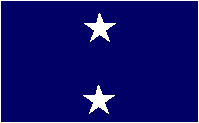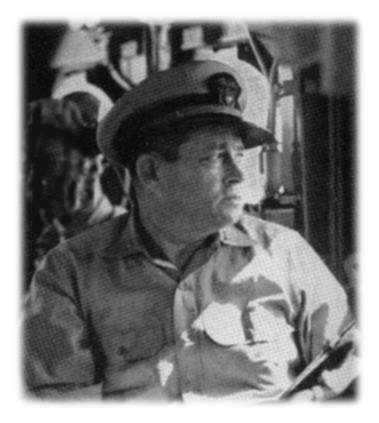

| Rear-Admiral
Clifton Albert Frederick Sprague
Born: ? Died: ? Nickname: "Ziggy" |
 |
Sprague's day came when he was assigned to the Leyte landings, as COMTU 77.4.3. Consisting of six escort carriers (CVE), three destroyers, and four smaller destroyer escorts, this force encountered the Center Force of Admiral Kurita off Samar making the Battle of Samar. Through Sprague's able leadership, a disaster was prevented when five of the six escort carrier escaped the grasp of IJN units.
Still
commanding the escort carriers during the Lingayen Gulf landings on Luzon
in early 1945, by late May Sprague had reported in "makee-learn" (Reynolds,
Fast Carriers) status to the fleet of fast carriers reporting in for the
final strikes against Japan, hoisting his flag on USS Ticonderoga.
This was Sprague's last war-time assignment. However, had the war continued,
Sprague would have led a Fast Carrier Group against Japan during the Olympic
and Coronet landings. He became a Vice-Admiral after the war. He was no
relative of Tommy Sprague.